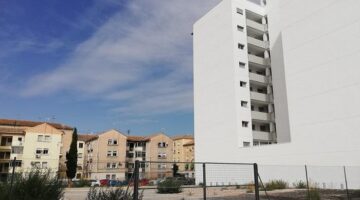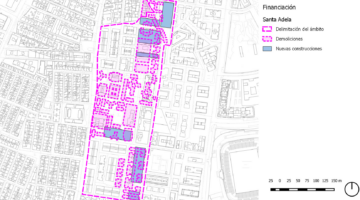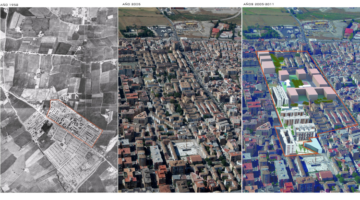


Neighborhood regeneration of Santa Adela, Granada
Main objectives of the project
Santa Adela, a neighbourhood that emerged on the southern outskirts of Granada in the late 1950s after the 1956 earthquake, has faced construction problems due to its rapid development. Now one of the most densely populated neighbourhoods in the city, it has been the subject of a comprehensive urban reform plan that seeks to improve the habitability and quality of life of its residents without displacing the original inhabitants. Public intervention has included the renovation and reconstruction of residential areas, the rehabilitation of existing buildings with a focus on energy efficiency and accessibility, as well as socio-educational programmes and participatory processes.
Date
- 2000: En proceso
Stakeholders
- Granada City Hall
Location
Country/Region: Granada, Spain
Description
Santa Adela, a neighbourhood on the southern outskirts of Granada, emerged in the late 1950s in response to the 1956 earthquake in the city, initially housing the victims. Despite its peripheral origin, it has become one of the most densely populated neighbourhoods in Granada, although it presents construction pathologies due to the urgency of its development.
The urban reform plan in Santa Adela seeks primarily to improve the habitability and quality of life of its residents, promoting social integration and socio-economic revitalisation without displacing the former inhabitants. A comprehensive public intervention has been implemented in five areas, including the renovation through demolition and reconstruction of some residential areas, as well as the rehabilitation of existing buildings in a better state of conservation, with a focus on energy efficiency and accessibility. These physical actions are complemented by socio-educational programmes and participatory processes that ensure the inclusion of residents in identifying the needs of the environment.
The combination of interventions ranging from demolition of part of the urban fabric to rehabilitations, together with participatory processes, stands out as one of the most significant aspects of this initiative. This approach has been possible thanks to a collaborative management between local social entities and the public administration, which has adapted the financing schemes to the socio-economic reality of the area's residents.

